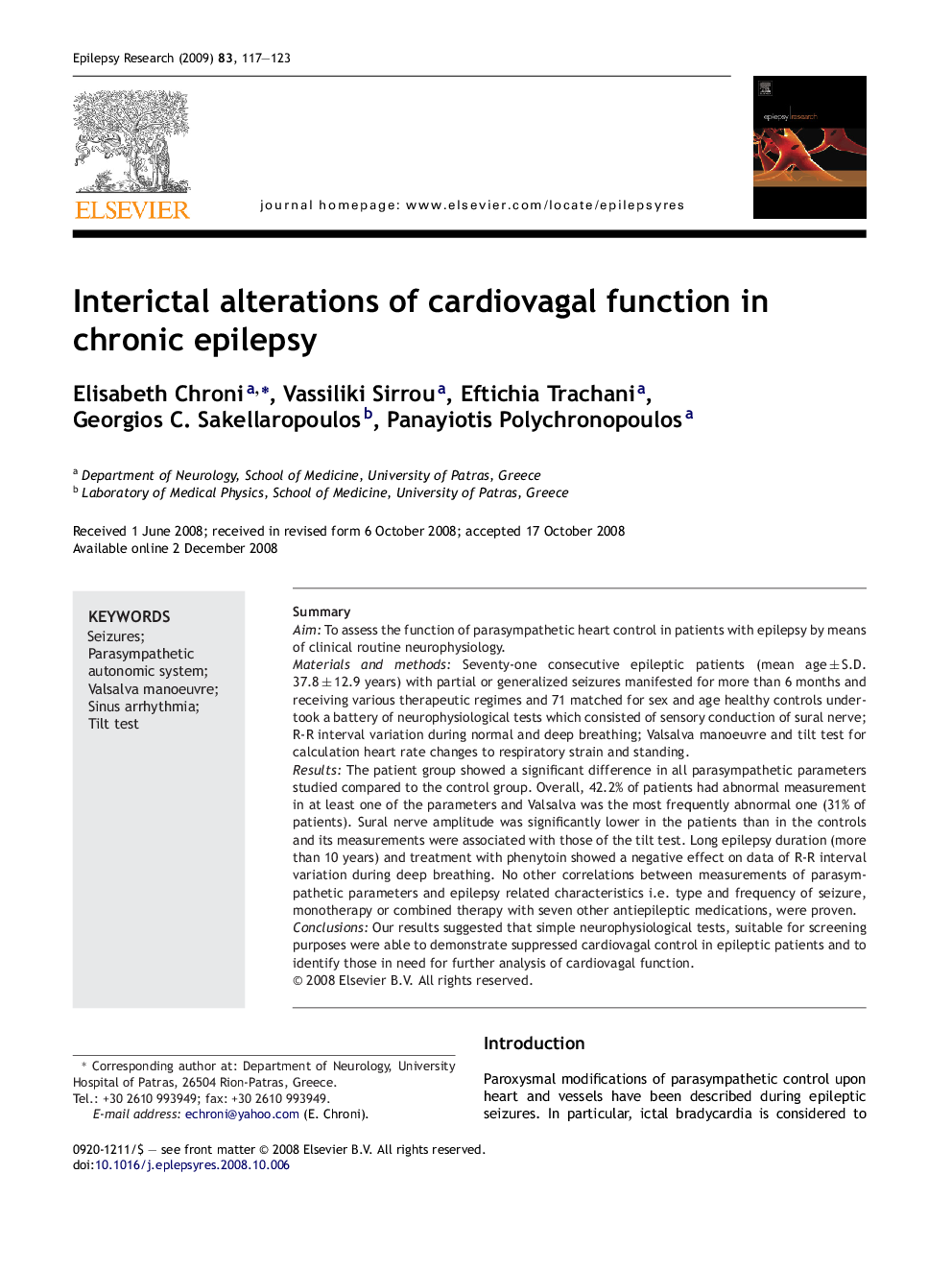| Article ID | Journal | Published Year | Pages | File Type |
|---|---|---|---|---|
| 3052689 | Epilepsy Research | 2009 | 7 Pages |
SummaryAimTo assess the function of parasympathetic heart control in patients with epilepsy by means of clinical routine neurophysiology.Materials and methodsSeventy-one consecutive epileptic patients (mean age ± S.D. 37.8 ± 12.9 years) with partial or generalized seizures manifested for more than 6 months and receiving various therapeutic regimes and 71 matched for sex and age healthy controls undertook a battery of neurophysiological tests which consisted of sensory conduction of sural nerve; R-R interval variation during normal and deep breathing; Valsalva manoeuvre and tilt test for calculation heart rate changes to respiratory strain and standing.ResultsThe patient group showed a significant difference in all parasympathetic parameters studied compared to the control group. Overall, 42.2% of patients had abnormal measurement in at least one of the parameters and Valsalva was the most frequently abnormal one (31% of patients). Sural nerve amplitude was significantly lower in the patients than in the controls and its measurements were associated with those of the tilt test. Long epilepsy duration (more than 10 years) and treatment with phenytoin showed a negative effect on data of R-R interval variation during deep breathing. No other correlations between measurements of parasympathetic parameters and epilepsy related characteristics i.e. type and frequency of seizure, monotherapy or combined therapy with seven other antiepileptic medications, were proven.ConclusionsOur results suggested that simple neurophysiological tests, suitable for screening purposes were able to demonstrate suppressed cardiovagal control in epileptic patients and to identify those in need for further analysis of cardiovagal function.
